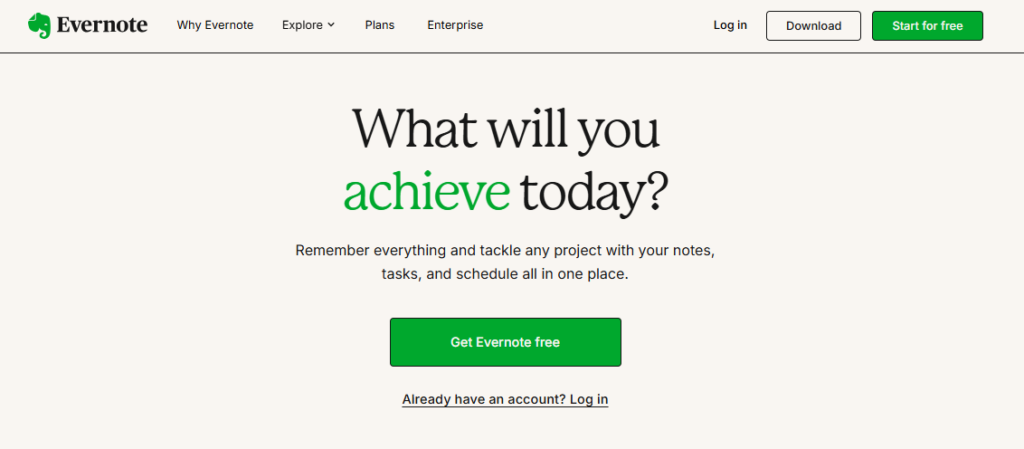For More Free Videos, Subscribe to the Rhodes Brothers YouTube Channel.
Feeling stuck in a cycle of procrastination can be frustrating, especially when your to-do list keeps growing, but the motivation to tackle it just isn’t there. The truth is, productivity isn’t about perfection or constantly being busy—it’s about building small, consistent habits that create meaningful progress over time. As John S. Rhodes of the Rhodes Brothers wisely says, “Passion follows work—it’s not the other way around. You don’t need to feel motivated to start; you just need to start.”

In this post, we’ll uncover five powerful, actionable strategies (plus a bonus one!) to help you transform laziness into productivity. By the end, you’ll have the tools to create habits that fuel your passion, harness your energy, and make consistent progress toward your goals.
Whether you’re trying to break bad habits, create new routines, or simply find your spark, this guide will provide step-by-step advice, helpful tools, and examples to help you get there.
TL;DR
- You already have natural mastery over simple tasks—you just need to build on it.
- Forgetting your skills happens because of “automaticity”; bring awareness to what you already know.
- Productivity is built on small habits, stacked over time.
- Energy doesn’t come from caffeine or willpower alone—it’s powered by vision and goals.
- Passion grows with practice—start small, and the love for the process will follow.
Why Laziness Isn’t the Real Problem
Before diving into strategies, let’s address a key concept: laziness is not a lack of ability. Often, it’s a lack of clarity, direction, or systems to get started. Think of the last time you delayed something—it probably wasn’t because you couldn’t do it but because you didn’t feel like it.
But here’s the secret: action precedes motivation. Once you start, even with a simple step, momentum builds, and you’ll find yourself energized to do more.
How to Go From Lazy to Productive: Step-by-Step Strategies That Work
Productivity doesn’t come from endless hustle or a magical burst of energy—it’s built on small, intentional actions that create momentum. Whether you’re tackling a personal goal, a work project, or simply trying to feel more accomplished, these strategies will guide you toward becoming the most productive version of yourself.
Recognize Your Built-In Mastery
The first step to overcoming laziness is realizing that you’re already a master at many things—you just might not acknowledge them. From tying your shoes to typing on a keyboard, these actions are now second nature because you’ve done them repeatedly. The same principle applies to productivity: mastery comes from practice and consistency.
Actionable Tips for Leveraging Your Skills
-
- Reflect on past successes: Write down three things you’ve mastered in your life, no matter how small. For example:
-
-
- “I’ve mastered cooking a basic meal.”
-
-
-
- “I’m great at answering client emails quickly.”
-
-
-
- “I know how to create a budget spreadsheet.”
-
Recognizing these successes builds confidence and reminds you that you have the skills to conquer new challenges.
- Start with what you’re good at: If you’re struggling to begin, focus on tasks you’re already familiar with. For example, if you’re great at organizing, start your day by cleaning your workspace to create a productive environment.
Tools to Support This Step

- Notion: Create a document to track your successes and build a list of skills or accomplishments.
- Evernote: Use this app to jot down quick reflections or brainstorm ways to apply your skills to new challenges.
- Trello: Organize your tasks visually and identify areas where you can apply your strengths.
Overcome the “Curse of Knowledge”
John S. Rhodes introduced a powerful concept in the video: the “curse of knowledge.” This happens when we become so skilled at something that it feels automatic, and we forget how much effort it originally took to master it. While this automaticity is helpful, it can also make us overlook our own abilities, leaving us feeling stuck when starting something new.
How to Reconnect with Your Strengths
- Document your skills: Create a running list of things you’ve mastered. For example:
- Learning to drive.
- Completing a professional certification.
- Managing household tasks efficiently.
This list can serve as a motivational reminder of your capability.
- Turn automatic actions into intentional ones: For example, if you’re skilled at crafting emails, use that strength to create templates, checklists, or processes that make your workflow smoother.
Tools to Support This Step

- Google Docs or Microsoft Word: Create a “mastery journal” to document your skills and accomplishments.
- Zapier: Automate repetitive tasks, like email responses or file organization, to make better use of your skills.
- Calendly: If you’re skilled at managing schedules, this tool can automate meeting setups for better time management.
Build Productivity Through Habits
Habits are the backbone of productivity. By creating small, consistent routines, you can build systems that keep you moving forward—even on days when motivation feels low.
Habit Stacking: The Secret to Building Momentum
Habit stacking, popularized by James Clear in Atomic Habits, involves linking a new habit to an existing routine.
Examples of Habit Stacking:
- After brushing your teeth in the morning, write down three top priorities for the day.
- While waiting for your coffee to brew, review your calendar or journal for two minutes.
- After finishing lunch, spend five minutes organizing your workspace.
Tools to Build Better Habits

- Habitica: Turn your habits into a game where completing tasks earns you rewards.
- Streaks App: Track your habits daily and visualize your progress.
- Bullet Journals: Create a physical habit tracker to monitor your routines.
Example in Action
Let’s say you want to create a morning routine for productivity. Start with one habit, like drinking a glass of water as soon as you wake up. Once that feels natural, add another habit, like writing down your goals for the day. Over time, this stack of habits becomes a smooth, productive start to your day.
Use Vision and Goals to Fuel Your Energy
Energy doesn’t always come from physical sources like caffeine or food. Often, it’s your long-term vision and goals that give you the drive to push forward. Having a clear picture of where you want to go can provide the inspiration you need to take that first step.
Steps to Turn Goals into Energy
- Define Your “Why”: For example, if your goal is to write a book, remind yourself why it matters—perhaps to inspire others or share your knowledge.
- Set SMART Goals: Make your goals Specific, Measurable, Achievable, Relevant, and Time-bound. Instead of saying, “I want to be more productive,” say, “I will complete two work tasks before lunch each day for the next week.”
- Break It Down: Divide big goals into smaller, actionable steps. For example:
- Long-term goal: Write a book.
- Short-term goal: Write 300 words daily for the next month.
Tools for Goal Setting

- Trello or Asana: Use these tools to break down your goals into smaller tasks and track your progress.
- Vision Board Apps (like Canva): Create visual reminders of your goals to stay inspired.
- Journals: Use a daily planner or journal to reflect on your progress and adjust your goals as needed.
Let Passion Follow Practice
A common misconception is that you need to feel passionate to start something. But as John S. Rhodes explains, “Passion follows work—it’s not work that follows passion.” When you take action, even small steps, your brain rewards you with dopamine, creating a positive feedback loop that fuels your passion.
Steps to Build Passion Through Action
- Start Small: Begin with a low-effort task to build momentum. For example, open a document and brainstorm ideas for five minutes.
- Track Progress: Keep a journal or use an app to track your achievements, no matter how small. Seeing progress builds excitement and keeps you motivated.
- Celebrate Wins: Reward yourself for completing tasks, whether it’s taking a break, enjoying a treat, or simply acknowledging your effort.
Tools to Support Passion-Building

- Pomodoro Timer (e.g., Focus Booster): Break tasks into manageable intervals to make work feel less overwhelming.
- Toggl Track: Track how much time you spend on tasks and see your progress over time.
- Gratitude Journals: Reflect on what you’ve accomplished each day to build a positive mindset toward your work.
Famous Quote: Aristotle once said, “We are what we repeatedly do. Excellence, then, is not an act, but a habit.” This reinforces that consistent practice not only creates mastery but also fuels passion.
Example in Action
Let’s say you want to start exercising but don’t feel passionate about it. Begin with a five-minute walk each day. As you build the habit, you’ll notice how good you feel, which motivates you to do more. Over time, your small efforts grow into a passion for staying active.
Actionable Steps to Go From Lazy to Productive
Becoming productive is achievable for everyone, but the strategies you use may vary depending on your current situation, goals, and lifestyle. Whether you’re a beginner starting from scratch, a millennial juggling a fast-paced life, or someone nearing retirement looking to make the most of your time, the key lies in breaking productivity into practical, manageable steps. Below, we outline tailored advice for different demographics, followed by universal strategies that work for all.
For beginners, productivity can feel overwhelming, so it’s best to start small and focus on building momentum. Begin by identifying one specific goal for the day, such as “clean my desk” or “write 100 words for my blog,” and apply the two-minute rule: commit to working on it for just two minutes. Often, starting is the hardest part, and this simple rule helps you overcome inertia. Create a basic morning routine that includes small actions like drinking water, writing down three priorities for the day, and tidying up your workspace. Tracking your progress is also essential—consider using a habit-tracking app like Habitica or a physical checklist to visually celebrate your wins. Finally, reward yourself for completing tasks, no matter how small, whether it’s enjoying a coffee or taking a short walk. For tools, beginners can use apps like Google Keep for simple lists, Forest to gamify focus, or Pomofocus to break tasks into manageable intervals.
For millennials, productivity often involves balancing work, side hustles, social commitments, and personal goals. The Eisenhower Matrix is a great tool for prioritization—categorizing tasks by urgency and importance helps you focus on what truly matters. Group similar activities together, like answering emails or making calls, to save time and energy through task batching. Technology can be a game-changer for millennials, with tools like Zapier that automate repetitive tasks, such as saving email attachments or scheduling social media posts. Set boundaries by turning off phone notifications during work hours or using apps like Freedom to block distracting websites. Adopting the 80/20 rule is also helpful: focus on the 20% of tasks that yield 80% of results and let go of unimportant activities. Millennials can benefit from productivity tools like Trello or Asana for task management, Notion for customizable planning, and Grammarly for professional communication.
For individuals nearing retirement, productivity often shifts to personal goals, hobbies, and projects they’ve always wanted to pursue. Start by defining your priorities—whether it’s traveling, spending time with family, or picking up a new skill—and use these to guide your daily focus. A flexible routine is crucial. Begin the day with light exercise or meditation to energize yourself, then dedicate specific blocks of time to hobbies or projects. Decluttering can also be a productive way to free up mental space; methods like the KonMari approach can help you focus on what’s truly important. Consider learning something new, such as a language or skill, through platforms like Skillshare or Duolingo. Long-term goals, such as planning a family trip or writing a memoir, can be broken into smaller, actionable steps. For instance, writing a memoir can start with drafting one chapter at a time, while planning a trip can involve setting a budget, researching destinations, and booking accommodations. Tools like Evernote for organizing ideas, Google Calendar for setting reminders, and Duolingo for daily learning are especially useful for this demographic.
Regardless of your background, there are universal strategies that can improve productivity for anyone. The Pomodoro Technique is an excellent method for staying focused—work for 25 minutes, take a 5-minute break, and repeat. Planning your day the night before is another effective habit; spend just five minutes writing down your top three priorities for the next day. A clean, organized environment also makes a huge difference—decluttering your space reduces distractions and boosts focus. Remember to practice self-compassion along the way. Productivity is a journey, not a race, and setbacks are natural. Learn from them, adjust your approach, and move forward. Celebrating progress is equally important. Whether it’s taking a short break, enjoying a treat, or reflecting on your achievements, rewards can help reinforce the habit of productivity.
A sample daily routine that works for anyone involves starting the morning with a glass of water, five minutes of stretching or meditation, and writing down your top three priorities. Midday, tackle your most important task using the Pomodoro Technique and take short breaks to recharge. In the evening, review your accomplishments, plan your next day, and reflect on the wins of the day to practice gratitude. With the right tools, such as Trello, Notion, or a simple checklist, and a focus on consistent, small actions, anyone can transform their habits and achieve meaningful progress.
Common Mistakes to Avoid
Even with the best intentions and strategies in place, it’s easy to fall into unproductive habits that derail your progress. Recognizing these common pitfalls can help you stay on track and maintain consistent momentum. Here are some key mistakes to watch out for and how to course-correct:
Waiting for Motivation
One of the biggest misconceptions about productivity is that you need to feel motivated to get started. In reality, waiting for motivation often leads to procrastination. Motivation is not the spark that begins action—it’s the reward that comes after taking the first step. Instead of relying on how you feel, focus on committing to small, actionable steps. For example, set a timer for two minutes and start working on a task, even if you don’t feel like it. Often, the simple act of starting creates the momentum needed to keep going. As the saying goes, “Action precedes motivation, not the other way around.”
Setting Unrealistic Goals
Overambitious goals can quickly lead to frustration and burnout. For example, deciding to write an entire book in a month or lose 20 pounds in two weeks can make the goal feel insurmountable. Instead, focus on breaking large goals into smaller, manageable steps. For instance, if your goal is to write a book, start by outlining one chapter or writing 300 words a day. These smaller wins add up over time and make the process feel achievable. Using tools like SMART goals (Specific, Measurable, Achievable, Relevant, Time-bound) can help you create realistic objectives that set you up for success.
Multitasking
Many people believe multitasking is a sign of efficiency, but research shows it actually reduces productivity by up to 40%. Switching between tasks forces your brain to refocus repeatedly, which wastes time and mental energy. Instead, practice monotasking—focusing on one task at a time until it’s complete. Use techniques like the Pomodoro Technique to work on a single task for 25 minutes, followed by a short break. This approach helps you stay focused, complete tasks more efficiently, and produce higher-quality results. If distractions are an issue, try using apps like Forest or Focus@Will to block out interruptions and help you concentrate.
Skipping Breaks
It’s easy to fall into the trap of overworking, especially when you’re trying to be productive. However, working for long stretches without breaks can lead to mental fatigue, decreased focus, and eventually burnout. Regular breaks are essential for recharging your energy and maintaining productivity throughout the day. Use the 90/20 rule (work for 90 minutes, then take a 20-minute break) or schedule shorter breaks every 25–30 minutes using the Pomodoro Technique. During your breaks, step away from your workspace, stretch, hydrate, or go for a short walk to reset your mind and body.
Comparing Yourself to Others
In the age of social media, it’s easy to compare your productivity to someone else’s highlight reel. You might see others achieving goals faster or presenting their lives as perfectly organized. This comparison often leads to feelings of inadequacy and discouragement. Remember that everyone’s journey is unique, and what works for someone else might not work for you. Instead of focusing on others, track your own progress and celebrate your wins, no matter how small. Journaling or using a habit tracker can help you visualize your growth and remind you of how far you’ve come.
Frequently Asked Questions
How do I get started if I feel completely unmotivated?
Start small. Choose a task that takes less than 5 minutes, like organizing your desk or writing one line in a journal. Action creates momentum.
What’s the best way to build a new habit?
Use habit stacking: tie the new habit to an existing routine. For example, after brushing your teeth, spend 2 minutes planning your day.
How do I stay consistent with habits?
Track your progress using tools like Habitica or a simple habit tracker app. Celebrate small wins to stay motivated.
Can I really be productive without caffeine or stimulants?
Absolutely! Energy comes from clear goals, proper rest, and hydration. Replace caffeine with water or herbal tea for sustainable energy.
What if I fail to stick to my habits?
Failure is part of the process. Reflect on what went wrong, adjust your approach, and try again. Consistency beats perfection.
How can I avoid distractions?
Create a dedicated workspace, use tools like Focus@Will (background music for concentration), and set specific work times.
How long does it take to form a habit?
Research shows it takes an average of 66 days to form a habit, but this varies depending on the complexity of the habit.
How do I find my passion?
Start working on something—even if you’re not passionate at first. Passion grows with practice and results.
What’s the best way to stay motivated long-term?
Set long-term goals and revisit them regularly. Break them into smaller steps and reward yourself along the way.
How do I know if I’m improving?
Track your progress daily or weekly. Reflect on how far you’ve come, and adjust your goals as needed.
Take the First Step Toward Mastery
Transforming laziness into productivity isn’t about overnight change—it’s about embracing small, deliberate actions that build momentum over time. By recognizing the mastery you already have, creating productive habits, and letting passion grow through practice, you can achieve any goal you set your mind to. Remember, you don’t need to be perfect or motivated to start—you just need to start.
As John S. Rhodes said, “Fight for your progress. If you sit idle, frustration builds and turns inward, but even the smallest action can break the cycle.”
So, what’s the first step you can take today? Maybe it’s writing down a goal, organizing your workspace, or simply committing to 5 minutes of focused work. Whatever it is, do it now. The journey toward productivity begins with a single action, and with each step, you’ll find the energy, passion, and mastery you need to keep moving forward.
Thank you for reading this guide! If you found it helpful, there’s even more waiting for you on the Rhodes Brothers YouTube Channel. Subscribe for actionable strategies, motivational insights, and tools to help you master productivity and achieve your goals.
Resource List
Here’s a curated list of tools, books, and resources to help you continue your journey:
Books
- Atomic Habits by James Clear – A must-read for building and maintaining habits.
- The Power of Habit by Charles Duhigg – Understand the science behind habit formation.
- Deep Work by Cal Newport – Learn how to focus deeply in a distracted world.
Apps and Tools
- Habitica – A gamified habit tracker that turns productivity into a game.
- Focus@Will – Music scientifically designed to help you concentrate.
- Todoist – A powerful to-do list app to organize your tasks.
- Streaks – Track and maintain your daily habits effortlessly.
- Notion – A customizable productivity tool for planning and journaling.
Courses and Podcasts
- The Productivity Show by Asian Efficiency – A podcast focused on actionable time management tips.
- Skillshare – Explore courses on productivity, habit-building, and time management.
- The Science of Well-Being by Yale University (available on Coursera) – A free course on building better habits for happiness.
Additional Resources
- Bullet Journal Method – Learn how to create a simple, effective productivity system.
- Pomodoro Timer – Use this free tool to implement the Pomodoro Technique.
- Rhodes Brothers YouTube Channel – For more videos on productivity, mindset, and achieving mastery.



